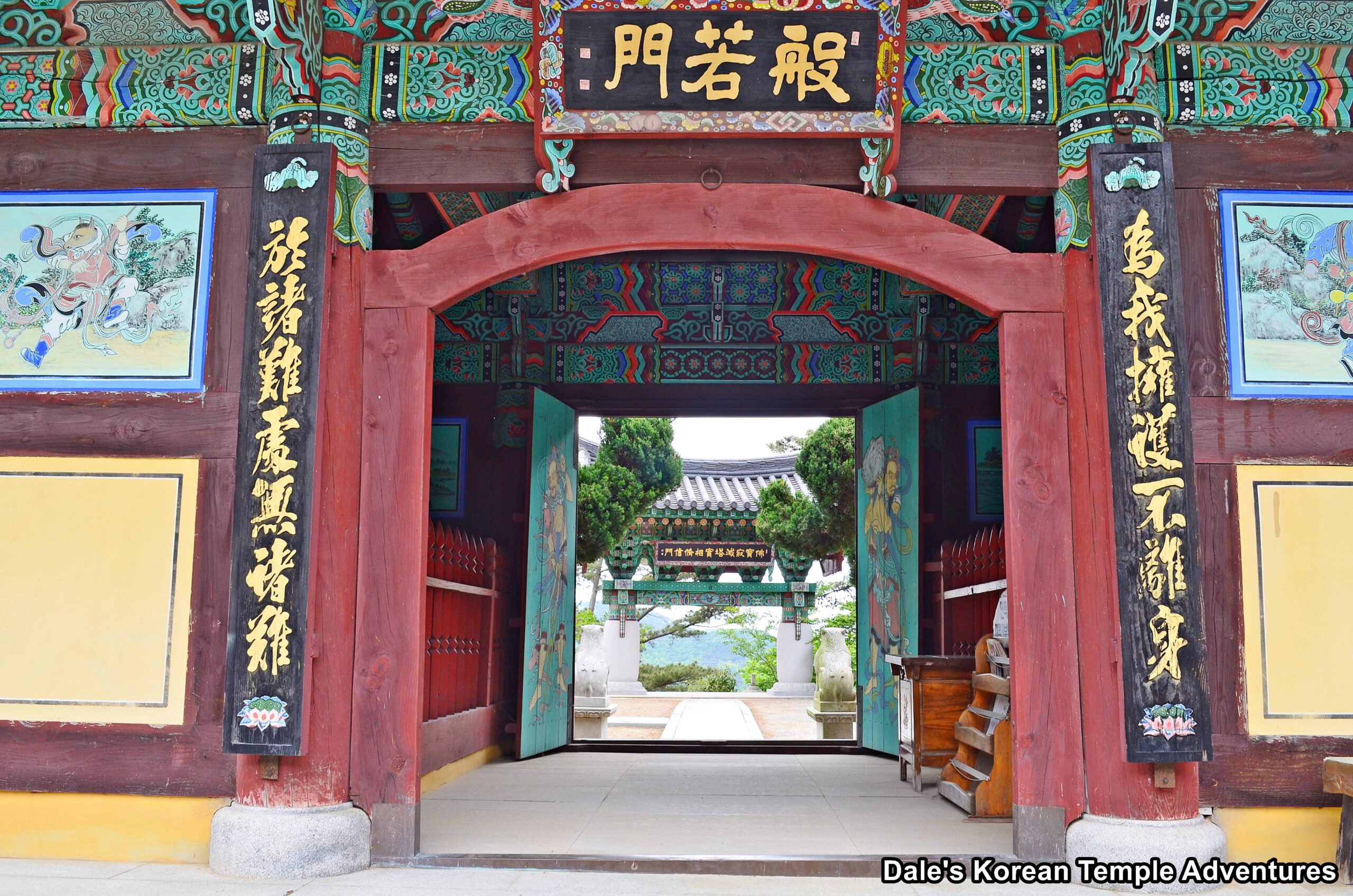
Temple History
Anjeoksa Temple was founded by Wonhyo-daesa (617-686 A.D.) in the first year of King Munmu of Silla’s reign in 661 A.D. to the west of Mt. Gamdimsan (308.4 m) in Gijang-gun, Busan. There is no early documented history about Anjeoksa Temple besides who founded it. With that being said, there is writing indicating that the temple was once named Unbongsa Temple. Also, there is architectural evidence at Anjeoksa Temple of a stone pagoda, roof tiles, earthenware, and more on the grounds, which points to the fact that Anjeoksa Temple existed at the end of the Silla Dynasty (57 B.C. – 935 A.D.) and/or the start of the Goryeo Dynasty (918-1392). However, this temple, Unbongsa Temple, was destroyed during the Imjin War (1592-1598) and left in disrepair for years. Later, the temple was moved to its present location and renamed Anjeoksa Temple.
Temple Legends
There are a couple temple legends directly associated with Anjeoksa Temple. The first relates to Wonhyo-daesa and Uisang-daesa (625-702 A.D.). One day, the two were hiking around the foothills of famous mountains in and around Busan for their Buddhist studies. When they passed by the foothills of Mt. Jangsan (634 m), they suddenly had a flock of nightingales fly onto their shoulders and arms. The birds seemed like they were hugging the two monks. With this realization, the monks figured that this spot at the base of Mt. Jangsan was sacred. As a result, they built a temple on this site. Afterwards, the group of nightingales blocked the monks’ pathway. This mountain is called “Aengrimsan,” which means “Forest of Nightingales” in English. Also, Wonhyo studied at Anjeoksa Temple after the temple was completed. It’s also believed that Wonhyo-daesa gained spiritual enlightenment and attained Nirvana at Anjeoksa Temple. That’s why the temple is named Anjeoksa Temple. “An – 安” means “Peaceful” in English, while “Jeok – 寂” means “Attainment of Nirvana.” So Anjeoksa Temple means “Peaceful Attainment of Nirvana Temple” in English.
There is a second legend also attached to the founding of Anjeoksa Temple. In this legend, Wonhyo-daesa and Uisang-daesa started to study, and they promised each other to meet up again once they had attained enlightenment. Afterwards, they went into caves. One day, Uisang-daesa saw Bicheon (Flying Heavenly Deities) during his studies. He wanted to show off to Wonhyo-daesa, his friend, so he received a promise from the Bicheon to appear when he next met Wonhyo-daesa. However, the Bicheon didn’t show up that day when Uisang and Wonhyo next met. Uisang was angry at the Bicheon, so he scolded her. Wonhyo knew about Uisang’s vanity/ego, so Wonhyo set up a meeting with the Bicheon. Afterwards, Uisang realized that Wonhyo had greater power than him, so Uisang started to look up to Wonhyo.
Temple Layout
Isolated away from both the city centres of Busan, as well as the ocean, Anjeoksa Temple is one of the more remote temples that you’ll find in Busan. You first approach Anjeoksa Temple up a steep set of stairs. After finally mounting these stairs, you’ll be greeted at the temple by a stout Iljumun Gate.
Lining the pathway up to the next entry gate, the Cheonwangmun Gate, are a row of fir trees. There are a pair of seokdeung (stone lanterns) and a pair of stone lion guardians out in front of the Cheonwangmun Gate. And surrounding the exterior walls to the Cheonwangmun Gate are the Sibiji-shin (The Twelve Spirit Generals). Stepping into the Cheonwangmun Gate, you’ll find four modern Sacheonwang (The Four Heavenly Kings) statues.
Upon entering the main temple courtyard, you’ll be greeted by a three-story stone pagoda. To the left of this central pagoda is a compact Jong-ru (Bell Pavilion). This Jong-ru houses a stout Brahma Bell. Next to the Jong-ru are a row of budo (stupas) underneath an ancient tree and surrounded by a bamboo forest.
Straight ahead of you is the rather large Daeung-jeon Hall at Anjeoksa Temple. The exterior walls to this main hall are mainly adorned with Shimu-do (Ox-Herding Murals). However, there are a couple other paintings adorning the exterior walls of the Daeung-jeon Hall like those dedicated to the myths about Wonhyo-daesa and Uisang-daesa and Anjeoksa Temple. As for the interior, and resting on the main altar, is a triad centred by Seokgamoni-bul (The Historical Buddha). This central image is then joined on either side by Bohyeon-bosal (The Bodhisattva of Power) and Munsu-bosal (The Bodhisattva of Wisdom). To the right of this main altar triad is a blacked haired statue dedicated to Jijang-bosal (The Bodhisattva of the Afterlife). This statue is then backed by an equally beautiful wooden relief of the Bodhisattva of the Afterlife. And on the far left wall, you’ll find a large wooden relief of the Shinjung Taenghwa (Guardian Mural) with a striking image of Dongjin-bosal (The Bodhisattva that Protects the Buddha’s Teachings) in the centre. The only other artwork of note inside the Daeung-jeon Hall are the murals painted above both sides of the entries of Munsu-bosal and Bohyeon-bosal.
The only other shrine hall that visitors can explore at Anjeoksa Temple is the Samseong-gak Hall. The exterior walls to this hall are adorned with Taoist images and a couple more murals dedicated to Wonhyo-daesa and Uisang-daesa and the founding of Anjeoksa Temple. As for the interior, you’ll find a newer image dedicated to Chilseong (The Seven Stars) hanging in the centre of the three shaman murals. On the left is a simplistic image of Dokseong (The Lonely Saint). And on the right side of these three main altar murals, you’ll find a large image dedicated to Sanshin (The Mountain Spirit), which is reminiscent of the one found at Beomeosa Temple in Geumjeong-gu, Busan. The reason for this similarity might be because the head monk at Anjeoksa Temple was first trained at Beomeosa Temple; either that, or it could simply be a coincidence. And the final artwork that occupies the Samseong-gak Hall on the right side are a row of paintings dedicated to famous monks that once called Anjeoksa Temple home. Not surprising, you’ll find paintings dedicated to both Wonhyo-daesa and Uisang-daesa.
A couple of interesting points about Anjeoksa Temple. You’ll find a sheer rock wall on the right side of the temple grounds. Here, you’ll find a collection of figurines left behind by devotees. You’ll wonder how people were able to place these trinkets upon the thinnest of rock ledges.
How To Get There
To get to Anjeoksa Temple, you’ll need to use the Busan subway system and get off at “Witbansong Station – 윗반송역” on the fourth line. This station is also known as “Dong-Pusan College Station – 동부산대학역.” Go out exit #3 and walk for about two minutes. There, you’ll find a bus stop. This bus stop is “Witbansong-yeok – 윗반송역.” Take the local town bus called “Gijang-gun 11 – 기장군 11” After ten stops, or eight minutes, get off at the “SWAT Team entrance – 경찰 특공대 입구” bus stop. From here, you’ll need to walk uphill for about 2.2 km, or thirty minutes, to get to Anjeoksa Temple.
Overall Rating: 7/10
Both entry gates at Anjeoksa Temple are masterfully built, and they’re wonderful examples of Korean Buddhist architecture. Other highlights to look for is the wooden relief of the Shinjung Taenghwa inside the Daeung-jeon Hall, as well as the beautiful paintings housed inside the Samseong-gak Hall. In addition to all this artistry, Anjeoksa Temple is beautifully located in the Busan landscape.


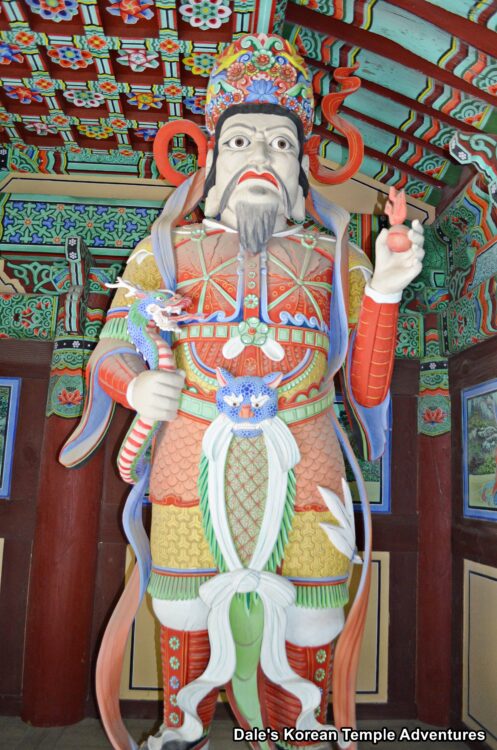
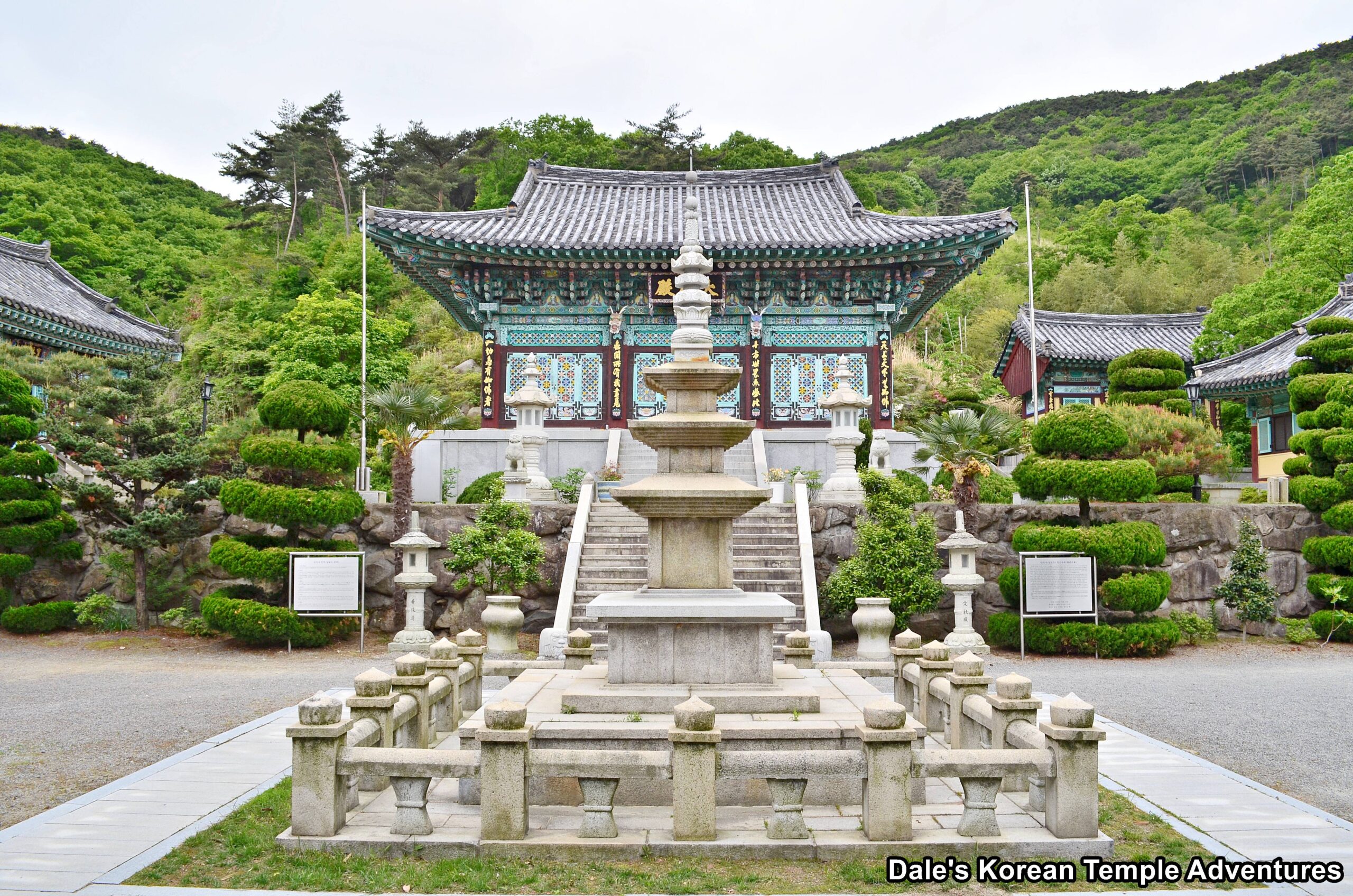
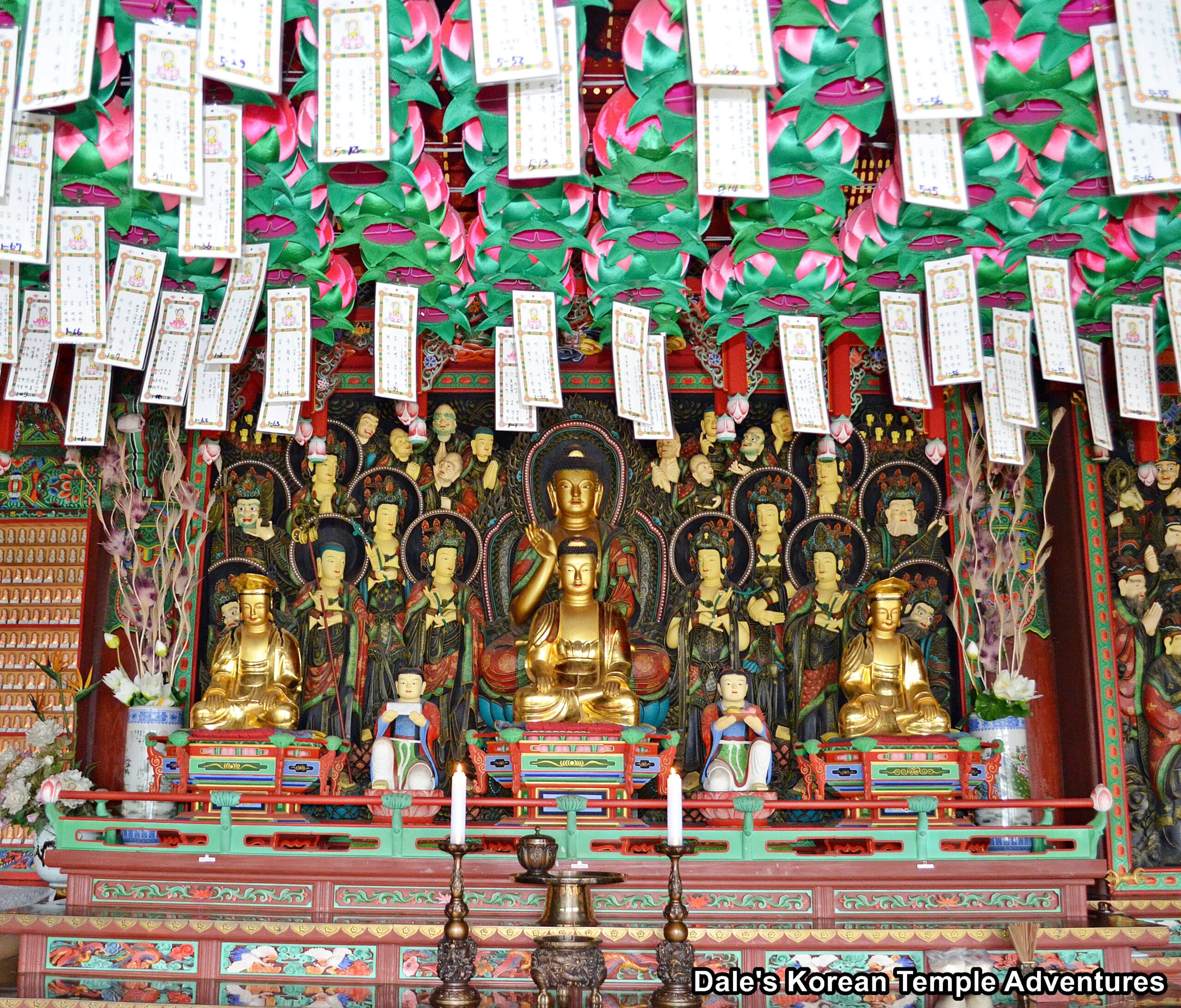
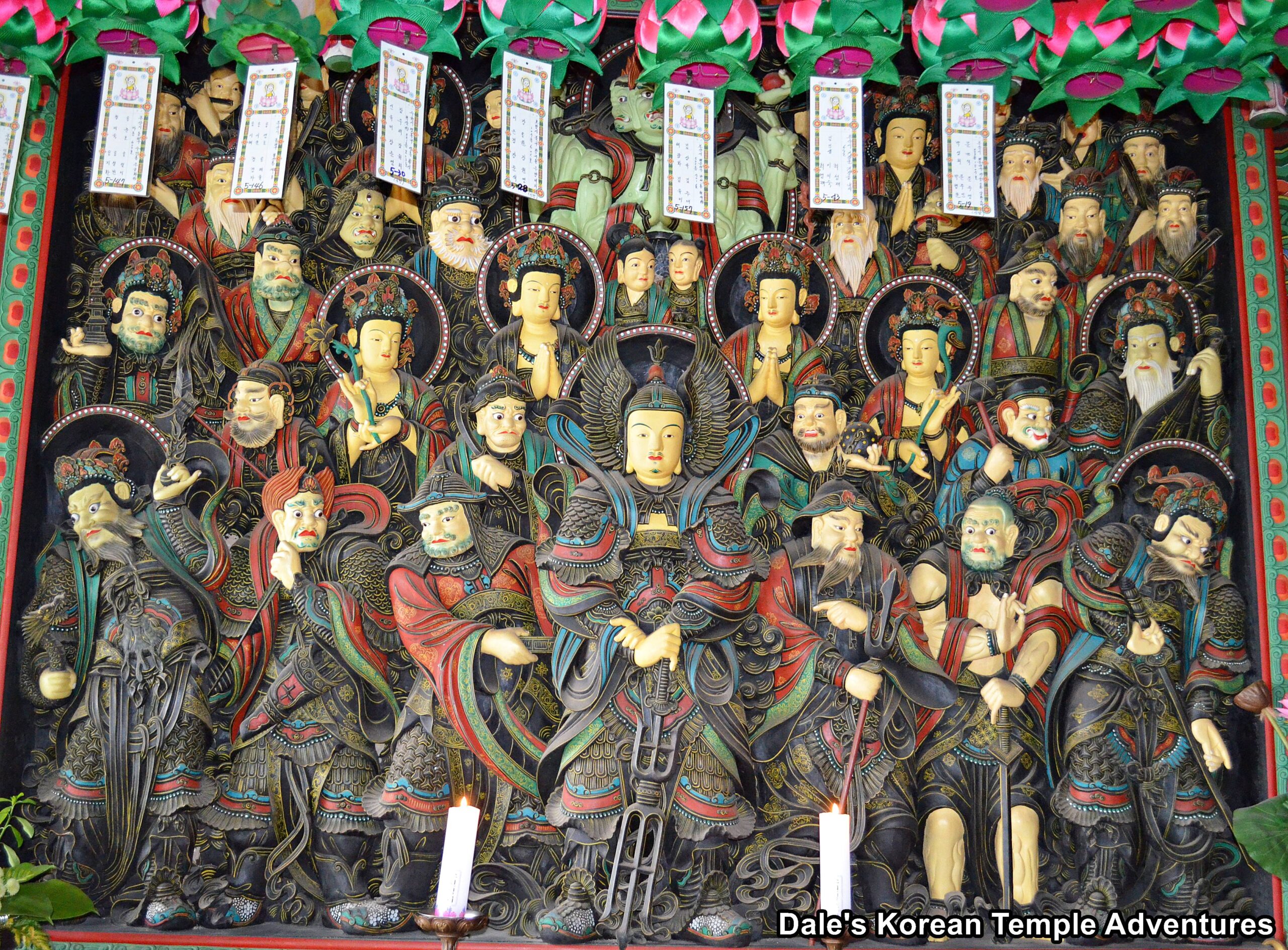
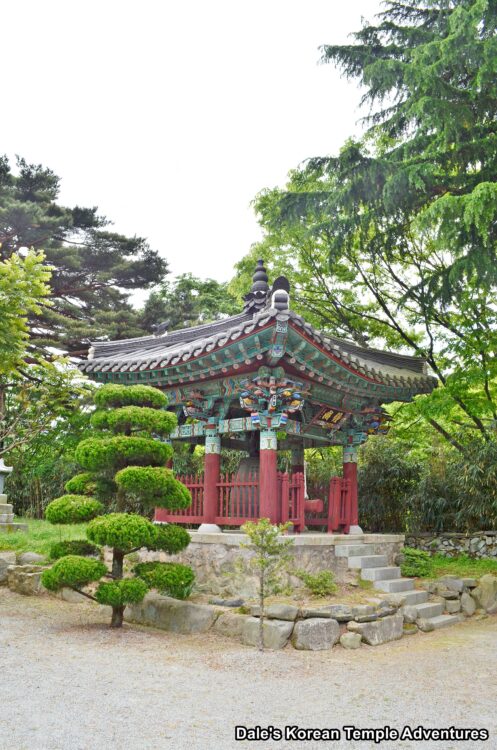
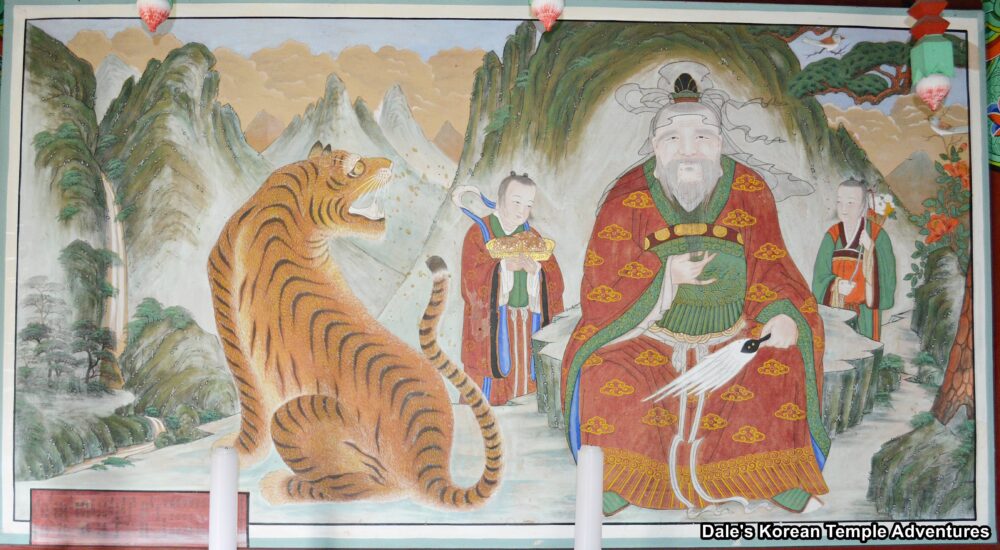

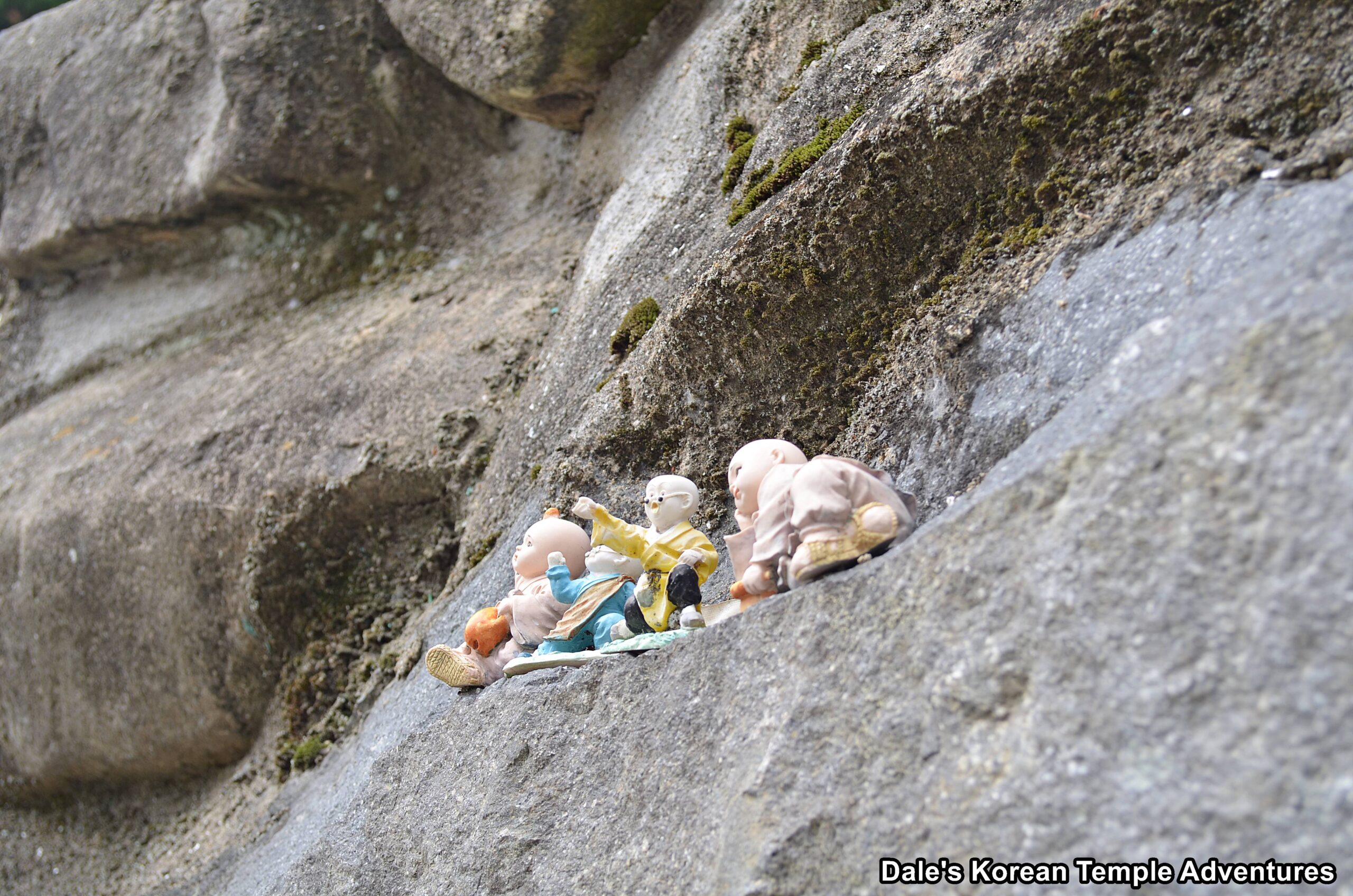


Recent comments